
For nearly 20 years the Petzl Grigri has been the market leader in assisted-braking belay devices. During all that time the design hasn't really changed. In the last few years, however, a number of other devices have come onto the market, all of which claim to give assisted-braking when belaying. Petzl have responded to this competition with the new Grigri 2.
What is an assisted-braking belay device?
The line between conventional belay devices and assisted-braking belay devices is a grey one. With conventional belay devices, the degree of braking applied during operation is almost entirely due to what position the braking rope is held and how hard it is held. The basic definition of an assisted-braking device is one that contains a function to increase the locking (braking) when the device comes under the sudden load of a fall. Assisted-braking belay devices have also been dubbed 'autolocking belay devices' in the past but this term is now being dropped due to it implying that they will work automatically.
There's a broad range of belay devices on the market, spanning from the Grigri (the standard assisted-braking device) at one end, to devices like the basic Black Diamond ATC (a conventional belay device) at the other. In between are a myriad of different devices, many designed for double ropes as well as single, which offer different degrees of braking but have no actual locking feature that occurs when the device is subjected to a sudden impact.
For this article we have chosen 5 current devices, all of which offer some degree of extra braking in the event of holding a fall (there are other devices available, which we haven't featured, like the Wild Country Single Rope Controller, that have a degree of assisted-braking in them). The devices were tested at The Edge Climbing Centre in Sheffield and you can see the resulting film below. We didn't test how the devices performed when abseiling, nor on other uses in Big Wall climbing, just basic ground belaying of leaders and top-roping.
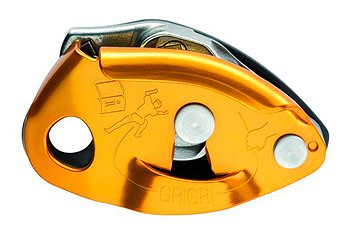
Grigri 2 by Petzl
The basic operation is the same as the old Grigri but the device is much lighter and more compact. One of the problems with the old Grigri was that it wasn't rated for the skinny single ropes that many climbers now prefer to use, and also that it could get a bit grabby when feeding rope quickly to a leader which resulted in some climbers using a special technique to hold the cam down, while paying the rope out (see Grigri video). If done incorrectly then this technique could compromise the safety of the device, especially on skinny ropes.
The Grigri 2 is rated for ropes from 8.9mm to 11mm. We found that the rope feed with skinny ropes (<10mm) was good and gave few problems. It also performed significantly better than the old Grigri when holding falls on these thin ropes and overall the action was excellent and intuitive. For a new 10mm rope it became a little more 'grabby' when feeding but was still perfectly useable. For an old furry 10mm rope we found the grabbiness of the device started to become a problem and it was quite a struggle to feed it through the device with any ease. We tried a new 11mm rope and weren't able to get this to work properly with the device at all.
Summary - A great improvement over the already-good Grigri in terms of lightness and handling of thinner ropes. Doesn't function well with older 10mm ropes and didn't function at all with 11mm ropes in our testing.
Availability - Many specialist Outdoor retailers.
Price - £63
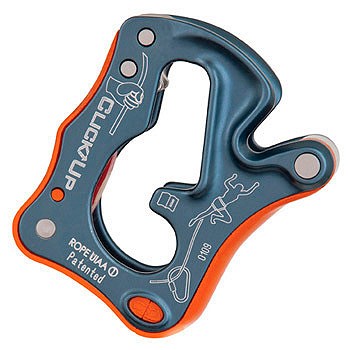
Click-Up by Climbing Technology
Although this device looks a little unusual, in operation it is a very user-friendly and confidence-inspiring piece of kit that allows smooth feed of the rope and also easily controlled feed when lowering. It is very easy to get used to and in our testing was the best device we used for mis-match weight belaying where one partner is heavier than the other. The lowering action gives easy control of the speed without having to have too much strain on the braking hand. You also have two choices of position for lowering: clicked-up with a very high grab factor, and clicked-down which is smoother for lighter climbers, or routes where there is a lot of friction in the rope already. It is rated for ropes from 9mm to 10.5mm and works well in this range. It also works okay with 11mm rope although does become a little too grabby. The belaying action is very similar to that of a conventional belay device hence it is easy to make the transition.
Summary - A superb device that is highly recommended and offers great control when holding falls and lowering. Simple, light and robust.
Availability - Currently limited availability: Joe Brown Shops, The Outdoor Shop and the Kendal Wall or Mountain Works online.
Price - £45 or £55 with an HMS belay krab.
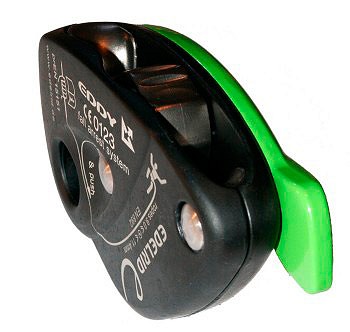
Eddy by Edelrid
A well engineered and super sturdy device that is unlikely to ever wear out but it is very heavy compared with the other devices tested. The rope feed is smooth both when taking in and feeding out. There are a couple of extra features on the Eddy which take a little getting used to, such as the failsafe brake on the release handle if it is pulled back fully, and the 'switch' that needs to be flicked to allow the rope to release once the device has locked. Once you have mastered these though, it is a simple and logical device to use. It is rated for 9mm to 11mm ropes and performs well across this range if a little grabby at the fatter end. The action is similar to the Grigri.
Summary - A solid and well-built device that performs well across a wide range of rope diameters. Slightly heavy and it takes a while to get used to and is quite expensive.
Availability - Many specialist Outdoor Retailers.
Price - £70

Smart Belay by Mammut
This device has no moving parts and is a relatively simple device to use, similar to the Click-up and a conventional belay device in its action. It behaves well when holding a fall and is reasonably easy to lower people although offered less-control than the Click-up. It is rated for 8.9mm to 10.5mm ropes. In our testing we found that there was some slippage through the device when holding falls on a 9mm single rope and it didn't lock fully. It is by some distance the least expensive device we looked at.
Summary - A very simple device which will last for many years. A good user-action similar to conventional devices, but suffered from slippage on thinner ropes. A very attractive price.
Availability - Currently limited availability; V12, CragX, Mountain Intelligence and CampFour, plus other Mammut retailers.
Price - £27
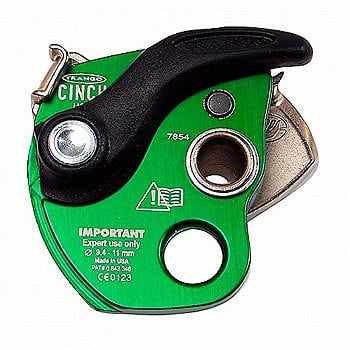
Cinch by Trango
A light device that takes some getting used to, as the way to hold it and feed out the rope is very specific. If you try to use this as a conventional belay device then you won't get very far since you have to have a hand on the device in a specific place in order to feed the rope through. I know no-one reads instructions but with the Trango Cinch it is certainly worth a look at the approved method of usage. Once mastered, this device has the smoothest of rope feeds. In fact, it is so smooth that it is slightly un-nerving and does take some getting used to. The Cinch is rated for ropes from 9.4mm to 11mm and the lock on a fall is very reliable and worked with all the ropes we tried including some skinny ones. Lowering a climber is also reasonably smooth and is in fact a similar action to the Grigri and Eddy although offers slightly less control than either of those devices. One small problem we found was that once the device had locked up, which can happen if you try and feed the rope to the lead climber very quickly, it was quite awkward to release the locked rope which could be annoying for your leader if they really needed rope quickly.
Summary - A complicated device that takes some getting used to but, once mastered, performs as well as anything else. It can lock itself up when feeding rope to your leader and is then difficult to release quickly.
Availability - A selection of UK stockists worth contacting including; Outside, V12, CragX, Rock On, Urban Rock, Rock + Run.
Price - £59.99
Summary Table of Specifications
| Device | Manufacturer | Claimed Rope Range | Weight | RRP |
|---|---|---|---|---|
| Grigri 2 | Petzl | 8.9mm to 11mm | 170g | £63 |
| Click-up | Climbing Technology | 8.9mm to 10.5mm | 120g | £45 |
| Eddy | Edelrid | 9mm to 11mm | 350g | £70 |
| Smart | Mammut | 8.9mm to 10.5mm | 120g | £27 |
| Cinch | Trango | 9.4mm to 11mm | 186g | £59.99 |
Thanks
We would like to thank Phil Robins and Tom Randall at The Edge Climbing Centre for their help with making this video review. We are also grateful to Tom Cain, Simon Berry, Frank Bennet and Paul Casey for their help
Dominic Green
Dominic Green – aka Weekday Productions - is a Sheffield-based film maker. Having worked in a wide range of roles within the film industry, from 35mm commercial and feature film right through to community-based film making. |
Alan James
Alan is the Director of UKClimbing and Rockfax. He has been climbing since 1971 on both sport and trad in the UK and the rest of Europe. He has resolutely used a conventional belay device for years and only recently changed to start using an assisted-braking device after reviewing them for this article. |
Mark Glaister
Mark is a climbing writer and photographer who has travelled to crags near and far for 35+ years. He has been using Petzl Grigri for many years for sport climbing. |

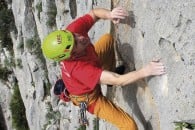



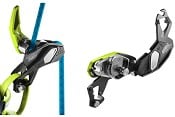
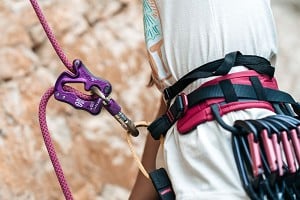
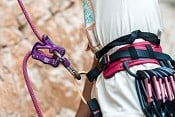
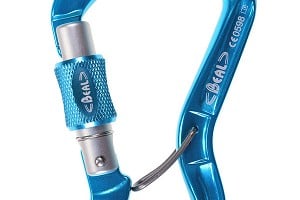
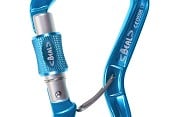
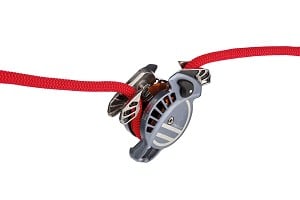
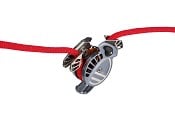
Comments